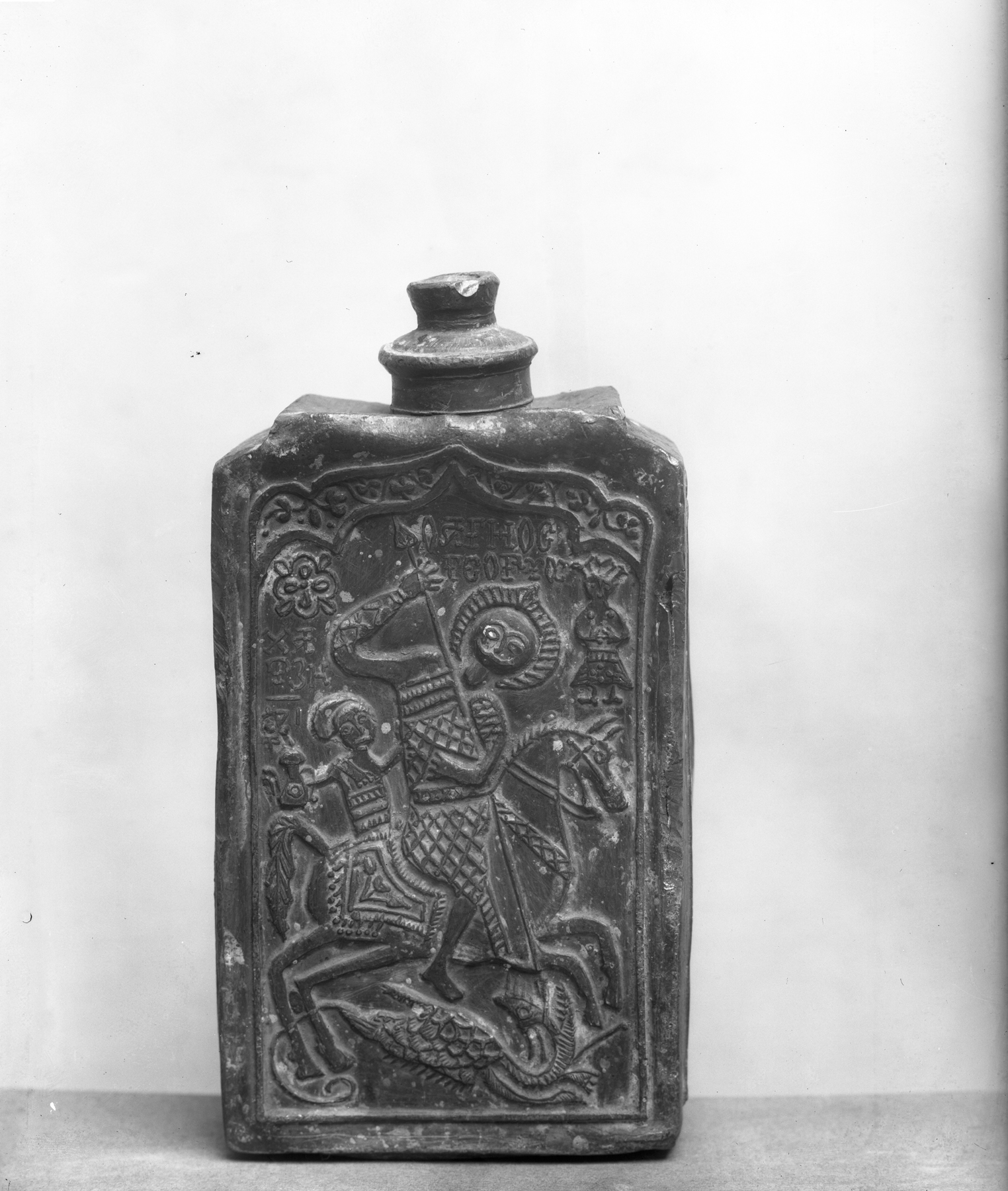Flask with an Image of Saint George Killing the Dragon
Such lead, silver or tin flasks for brandy were manufactured in large quantities for Christians in the late Ottoman Empire. The saints depicted on them were meant to protect the owner. Images of Saint George were particularly popular. Here, the saint's name is accompanied by the abbreviation IC XC (Jesus Christ), the name "Joseph" (probably the owner's), and on the other side, above the head of the irder seated behind St George, the word "Hadji" (meaning, for Christians, "one who has made a pilgrimage to Jerusalem").
Provenance
Provenance (from the French provenir, 'to come from/forth') is the chronology of the ownership, custody, or location of a historical object. Learn more about provenance at the Walters.
Dikran Kelekian, New York and Paris [date and mode of acquisition unknown]; Henry Walters, Baltimore, 1912, by purchase; Walters Art Museum, 1931, by bequest.
Conservation
| Date | Description | Narrative |
|---|---|---|
| 11/11/1983 | Examination | examined for condition |
Geographies
Balkan Peninsula
(Place of Origin)
Greece, Rhodes (Place of Discovery)
Measurements
H: 7 3/8 x W: 3 7/8 in. (18.8 x 9.8 cm)
Credit Line
Acquired by Henry Walters, 1912
Location in Museum
Not on view
Accession Number
In libraries, galleries, museums, and archives, an accession number is a unique identifier assigned to each object in the collection.
In libraries, galleries, museums, and archives, an accession number is a unique identifier assigned to each object in the collection.
55.1


